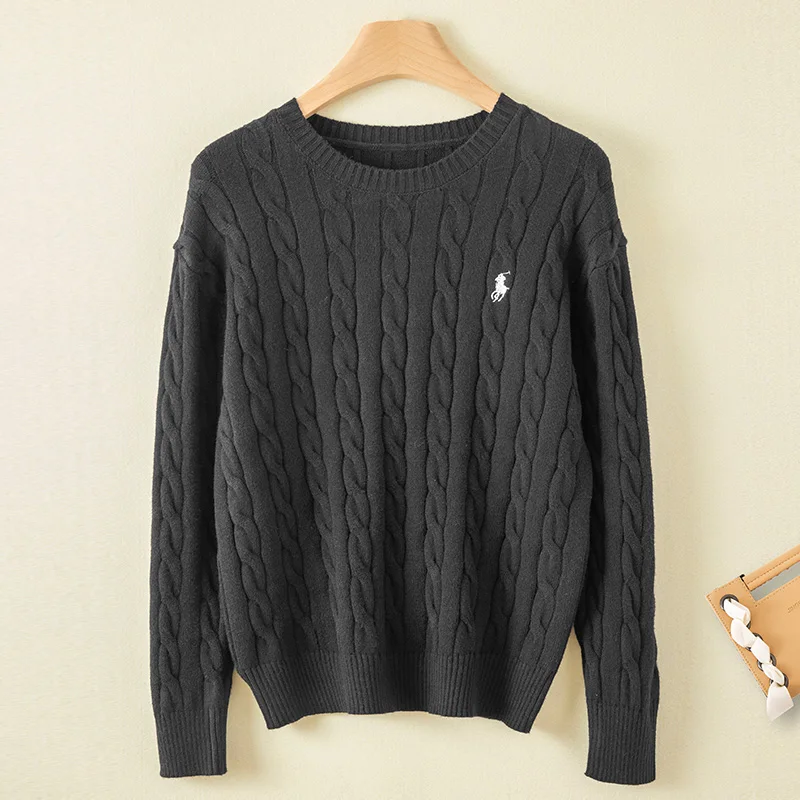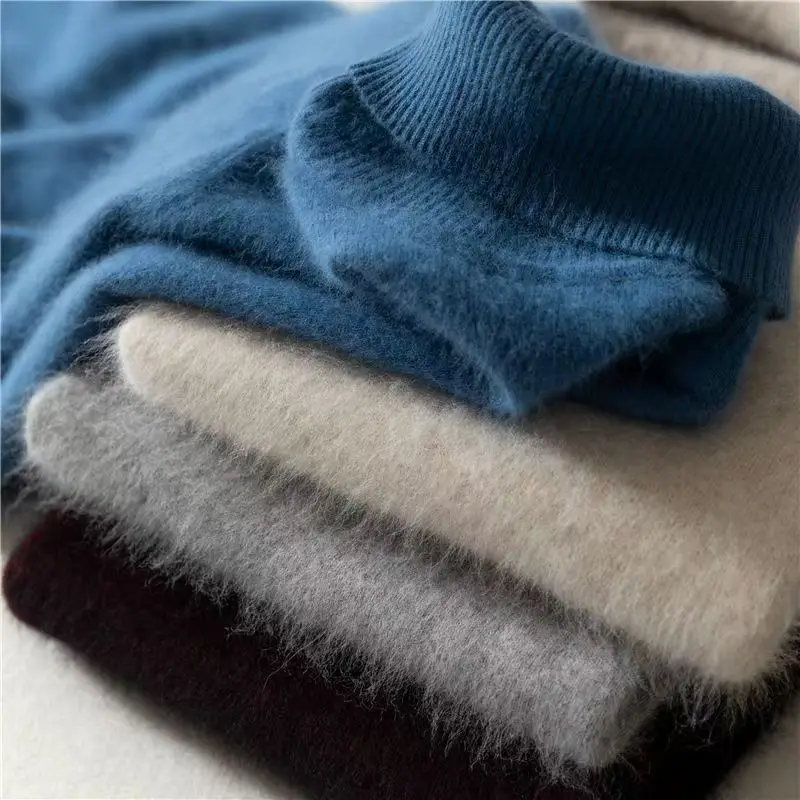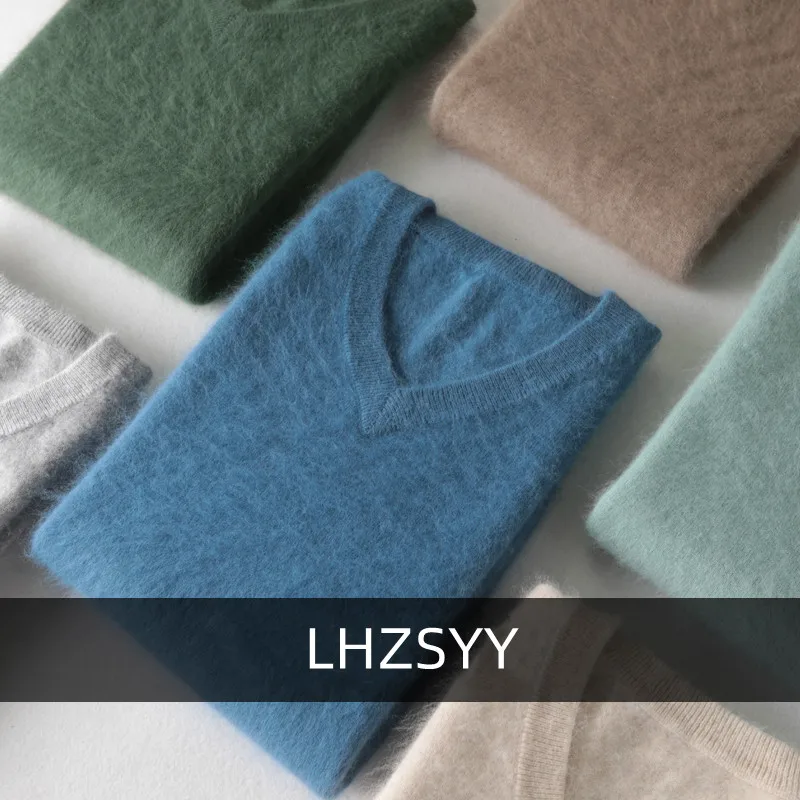Introduction: Why Proper Cashmere Storage Matters
Cashmere stands as one of the world’s most luxurious natural fibers, prized for its exceptional softness and warmth. These premium garments, crafted from fine fibers under 16 microns in thickness, represent not just clothing but an investment in quality. However, this delicate luxury requires special attention, particularly when it comes to storage.
Improper storage can quickly compromise even the finest cashmere pieces:
– Fiber distortion leading to permanent misshaping
– Moth damage that creates irreparable holes
– Mildew growth in humid conditions
– Yellowing from exposure to light or chemicals
The good news? With proper care, your premium cashmere items can maintain their luxurious appeal for decades rather than years. Studies show that well-preserved cashmere can retain its softness and structure for up to 30 years with proper care, protecting what is typically a significant investment ranging from $100 to well over $500 per garment.
In this comprehensive guide, we’ll walk through a complete cashmere storage system—from essential pre-storage cleaning to selecting the ideal containers, preventing moth damage, and maintaining your pieces during both short and long-term storage. The proper storage techniques for cashmere garments begin with understanding that exceptional care leads to exceptional longevity.
Pre-Storage Essentials: Cleaning Your Cashmere Properly
The foundation of proper cashmere storage starts with thorough cleaning. Storing soiled cashmere is perhaps the single most damaging mistake you can make, as invisible body oils, food particles, and environmental dirt not only attract moths but can permanently set into the delicate fibers.
Step-by-Step Cashmere Cleaning Guide:
Select the right cleaning method:
– Hand washing (preferred for most items)
– Machine washing on delicate cycle (only for sturdy pieces)Prepare your cleaning solution:
– Use lukewarm water at exactly 85°F/30°C
– Add a pH-neutral wool/cashmere-specific detergent
– Never use regular laundry detergents, which contain harsh enzymesWashing process:
– Gently submerge the garment, never rubbing or twisting
– Soak for 10-15 minutes, occasionally pressing down gently
– Rinse thoroughly with same-temperature water until no soap remainsDrying properly:
– Press (don’t wring) excess water out with a clean towel
– Reshape the garment on a fresh, dry towel
– Dry flat, away from direct heat or sunlight, for 24-48 hours
Ensuring your cashmere is completely clean and thoroughly dry creates the essential foundation for successful storage. Many enthusiasts find that washing cashmere at home not only saves on dry cleaning costs but actually helps maintain the fiber’s natural oils and softness when done correctly.
Remember that your garment must be 100% dry before storage—even slight dampness can lead to mildew growth and fiber damage. This careful cleaning process connects directly to our next crucial step: proper folding to maintain your garment’s integrity.
Estate Cloth’s cashmere sweaters are crafted from Grade A cashmere with fibers under 16 microns thickness, making proper cleaning and storage essential to maintaining their exceptional quality.
The Folding Fundamentals: Why Hanging Destroys Cashmere
One of the most damaging mistakes cashmere owners make is hanging their precious garments. Unlike sturdier fabrics, cashmere’s delicate fibers stretch permanently under their own weight when hung, leading to distorted shoulders, elongated sleeves, and an irreversibly altered silhouette.
Why Folding Is Critical for Cashmere:
- Gravity pulls constantly on hung garments, stretching fibers by up to 5-7% within just one season
- Shoulder areas bear the most weight, leading to permanent “hanger bumps”
- Fiber elasticity diminishes over time, making stretched cashmere impossible to restore
- Even specialized hangers cause gradual distortion
Step-by-Step Folding Techniques:
For Sweaters and Cardigans:
1. Lay the garment face-down on a clean, flat surface
2. Fold one side (about ⅓ of width) toward the center
3. Fold the sleeve back over the folded section
4. Repeat on the opposite side
5. Fold the bottom up once or twice, depending on length
For Scarves and Accessories:
1. Lay the scarf flat in a rectangle
2. Fold in thirds lengthwise
3. Fold in half or thirds again (depending on length)
4. Avoid sharp creases by keeping folds loose
For especially delicate or valuable pieces, consider placing acid-free tissue paper between folds to prevent creasing. This technique is particularly important for items with embellishments or especially fine weaves.
Understanding whether cashmere should be hung or folded is fundamental to maintaining your garment’s structure. While proper folding preserves the integrity of the fibers, this technique must be paired with selecting the right storage environment to truly protect your investment.
Selecting Ideal Storage Containers and Locations
The environment where you store your cashmere plays a crucial role in preserving its quality. Four environmental factors demand particular attention when storing these luxury garments:
- Temperature: Cool conditions (60-75°F/15-24°C) prevent fiber stress
- Light exposure: Darkness prevents color fading and fiber weakening
- Humidity levels: Low humidity (under 50%) prevents mildew growth
- Air circulation: Proper ventilation prevents musty odors and moisture buildup

Storage Container Options Compared:
| Storage Container | Pros | Cons | Best For |
|---|---|---|---|
| Cotton Garment Bags | Breathable, prevents dust | Limited protection from moisture | Closet storage |
| Acid-Free Boxes | Stackable, complete protection | Less air circulation | Long-term storage |
| Cedar Chests | Natural moth repellent, attractive | Expensive, heavy | Heirloom pieces |
| Fabric-Lined Bins | Affordable, stackable | Less breathable | Seasonal storage |
When selecting a storage location, avoid areas prone to temperature fluctuations or moisture, such as attics, garages, or basement spaces. Instead, opt for interior closets, under beds, or dedicated storage areas within your living space where environmental conditions remain stable.
For those with extensive cashmere collections, a complete guide to storing cashmere can help you create a customized storage system that addresses your specific needs. The right containers combined with ideal environmental conditions form the backbone of effective cashmere preservation.
Whether storing cashmere turtlenecks or other styles, these storage principles help maintain the exceptional quality that makes premium cashmere so desirable.
Comprehensive Moth Prevention Strategies
Moths represent perhaps the most notorious threat to stored cashmere. Understanding these destructive pests is essential for implementing effective prevention strategies. Adult moths don’t actually damage cashmere—it’s their larvae that feast on natural fibers, particularly those containing residual body oils or food particles.
Understanding the Enemy:
- Clothing moths complete their life cycle in 1-4 months
- Female moths lay 40-50 eggs at a time
- Larvae feed on natural fibers for 2-3 months before pupating
- They prefer dark, undisturbed locations—exactly where we typically store clothing
Effective Natural Deterrents:
Cedar Products:
– Cedar blocks, balls, hangers, and chest linings release aromatic oils that repel moths
– Must be refreshed by light sanding every 3-6 months to remain effective
– Work best in enclosed spaces where oils can concentrate
Lavender Applications:
– Dried lavender sachets provide up to 3 months of protection
– Lavender essential oil on cotton balls offers more concentrated protection
– Need replacement every 2-3 months as scent diminishes
Alternative Herbal Deterrents:
– Rosemary, thyme, and mint bundles offer supplementary protection
– Clove, cinnamon, and bay leaves provide additional aromatic barriers
– Most effective when used in combination with cedar or lavender
Physical Prevention Methods:
- Airtight containers with secure seals block moth entry
- Regular inspection (at least monthly) catches infestations early
- Brushing stored cashmere occasionally disrupts potential moth settlements
For suspected infestations, the freezing method proves highly effective: seal the garment in an airtight bag, freeze at 0°F/-18°C for at least 72 hours, then remove, brush thoroughly, and clean before returning to storage.
Protecting your cashmere from moths requires vigilance, but these natural methods avoid the harsh chemicals that can damage delicate fibers. These preventative strategies are particularly important for preserving investment pieces like cashmere cardigans that often become wardrobe staples.
Short-Term vs. Long-Term Storage Solutions
Different storage durations demand different approaches to cashmere care. The strategies for a sweater you’ll wear next week differ significantly from those needed for seasonal storage spanning several months.
Short-Term Storage (Days to Weeks)
Essential Practices:
– Allow 24-hour rest period between wearings
– Light brushing after each wear removes surface debris
– Storage in breathable cloth bags or on clean closet shelves
– Minimal folding for easy access and reduced creasing
Simplified Moth Prevention:
– Basic cedar blocks or lavender sachets nearby
– Regular air circulation through occasional refolding
– Periodic inspection during regular use
Accessibility Considerations:
– Store current-season items at eye level for easy access
– Group by color or style for efficient selection
– Avoid stacking more than 2-3 items to prevent compression
Long-Term Storage (Months)
Additional Protective Measures:
– Thorough cleaning is absolutely mandatory
– Strategic layering with acid-free tissue between folds
– Complete enclosure in breathable storage containers
– Storage in climate-controlled interior spaces only
Enhanced Moth Prevention:
– Layered defense with multiple repellent types
– Higher concentration of cedar and lavender products
– Sealed containers with supplementary repellents
– Scheduled monthly inspections
Preparation Requirements:
– Detailed documentation of stored items
– Condition assessment before storage
– Strategic placement for minimal disruption when accessing other items

Understanding the distinct requirements for seasonal storage and preservation of cashmere helps create an effective system that protects your investment while maintaining practical access to your collection.
Critical Mistakes That Ruin Cashmere During Storage
Even with good intentions, several common storage mistakes can significantly damage your precious cashmere pieces. Awareness of these errors helps prevent costly and often irreparable damage.
The Most Damaging Storage Errors:
Storing Dirty Cashmere: Body oils and food residues become permanent stains and attract moths
Hanging Instead of Folding: Causes shoulder distortion visible within just one season of storage
Using Non-Breathable Plastic Bags: Traps moisture leading to mildew growth and musty odors
Storing in Humid Environments: Promotes mildew development and fiber degradation
Exposure to Direct Sunlight: Causes color fading within weeks and fiber weakening over months
Overcrowding Storage Spaces: Creates compression wrinkles and prevents proper air circulation
Neglecting Moth Deterrents: Allows preventable moth damage to develop unchecked
Emergency Solutions for Common Situations:
If you discover moisture in your storage area:
Immediately remove cashmere, air dry completely in a temperature-controlled environment, then relocate to a drier storage space with improved ventilation.
If you notice minor moth damage:
Isolate the affected garment, freeze it following the protocol mentioned earlier, clean thoroughly, and inspect all nearby items before returning to storage with enhanced moth protection.
If you must store cashmere quickly without proper cleaning:
At minimum, air the garment thoroughly for 24 hours, brush surface debris, and store separately from clean items until proper cleaning can be performed.
Following the ultimate guide for cashmere storage helps you avoid these common mistakes and implement best practices that preserve the luxurious quality of your garments. Proper care is especially important for frequently worn pieces like women’s cashmere turtlenecks, which often transition between active wear and storage.
Cashmere Wrap Sweaters, Women's Cashmere Pullovers
$75.89 Select options This product has multiple variants. The options may be chosen on the product pageCashmere Cable Knit Sweaters, Women's Cashmere Pullovers
Price range: $111.82 through $112.93 Select options This product has multiple variants. The options may be chosen on the product pageCropped Cashmere Sweaters, Women's Cashmere Pullovers
$155.77 Select options This product has multiple variants. The options may be chosen on the product page- Price range: $102.02 through $109.37 Select options This product has multiple variants. The options may be chosen on the product page
Oversized Cashmere Sweaters, Plus Size Cashmere Sweaters, Women's V-Neck Cashmere Sweaters
$136.87 Select options This product has multiple variants. The options may be chosen on the product page- Price range: $108.11 through $130.03 Select options This product has multiple variants. The options may be chosen on the product page
Maintaining Your Cashmere During Storage Periods
Even properly stored cashmere benefits from periodic maintenance. Scheduled care during storage periods helps identify potential issues before they develop into serious problems and ensures your garments emerge from storage in pristine condition.
Recommended Maintenance Schedule:
Monthly Quick Inspection: Visual check for signs of pests, moisture, or storage container damage
Quarterly Thorough Assessment:
- Remove each item for careful examination
- Gently reshape if minor flattening has occurred
- Check all folds and creases for stress marks
Refold along different lines to prevent permanent creasing
Bi-Annual Deep Maintenance:
- Air garments for 24 hours in a clean, well-ventilated area
- Light brushing with a cashmere-specific brush
- Refresh or replace all moth deterrents
- Assess storage containers for any damage or wear
Maintenance Tracking System:
Create a simple log using a notebook or digital spreadsheet with:
– Item description
– Storage location
– Last inspection date
– Condition notes
– Maintenance performed
– Next scheduled check
This systematic approach to long-term cashmere garment care ensures no item is forgotten and creates accountability for regular maintenance. The small time investment in periodic checks prevents the much larger cost of replacing damaged garments.
For collectors of fine knitwear like men’s V-neck cashmere sweaters, this maintenance routine helps preserve the substantial investment these quality pieces represent.
Supplemental Content: Expert Answers to Common Cashmere Storage Questions

Can cashmere be stored in vacuum bags?
No, compression damages cashmere fibers and can permanently flatten the natural loft that gives cashmere its insulating properties. Additionally, vacuum sealing can trap residual moisture, leading to mildew development.
Is it safe to store cashmere with other woolens?
Yes, provided all items are completely clean and free from pests. However, separating different fabric weights helps prevent compression damage to lighter cashmere pieces.
What exactly is ‘breathable’ storage?
Breathable storage allows air circulation while protecting from dust and pests. This typically means containers made from natural fibers like cotton or paper-based materials with tiny perforations that permit air exchange while blocking larger particles and insects.
What constitutes Grade A cashmere and how does it affect storage needs?
Grade A cashmere features fibers under 16 microns in thickness and exceeding 36mm in length, creating exceptionally soft, lightweight fabric. These premium fibers are more delicate than lower grades, making proper storage even more critical to maintain their superior qualities.
How does cashmere storage differ from other luxury fabrics like silk?
While both require protection from moths, cashmere needs more protection against stretching and compression, while silk is more susceptible to moisture damage. Cashmere also benefits from cedar exposure, which can sometimes be too harsh for delicate silks.
Is cedar or lavender more effective for moth prevention?
Cedar provides longer-lasting protection (3-6 months before refreshing) but with diminishing potency, while lavender offers stronger initial repellent properties but needs replacement more frequently (every 2-3 months). Using both creates an effective two-tier defense system.
Learning how to fold and store cashmere safely combines these principles into practical techniques that protect your investment while making the most of your available storage space.
The Long-Term Benefits of Proper Cashmere Storage
The time and attention devoted to proper cashmere storage yields significant returns in both garment longevity and sustained luxury experience:
Extended garment lifespan: Well-stored cashmere can maintain its quality for decades rather than years, with some heirloom pieces remaining beautiful for 30+ years
Preserved softness and appearance: Proper storage prevents pilling, stretching, and color fading that typically occurs within just 1-2 seasons of improper care
Maintained investment value: Premium cashmere often retains or even increases in value when kept in excellent condition
Environmental sustainability: Longer-lasting garments reduce the need for replacement, decreasing overall resource consumption
Integrating proper storage practices into your seasonal clothing rotation doesn’t require enormous effort—just attention to detail and consistency. By implementing these techniques each time you transition your wardrobe, they quickly become habitual parts of your personal clothing care system.
The long-term preservation of cashmere fabric represents not just a protection of financial investment but an appreciation for exceptional craftsmanship and natural luxury. These preservation techniques work hand-in-hand with expert methods for preventing cashmere pilling to maintain the pristine appearance that makes fine cashmere so desirable.
The minimal effort of proper storage returns maximum rewards in the form of cashmere that remains as luxurious and beautiful as the day it was purchased, ready to provide warmth, comfort, and elegance for many years to come.







